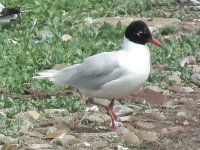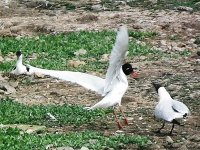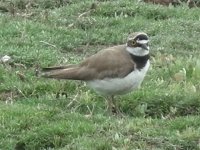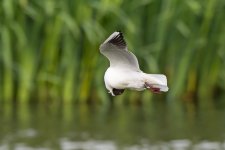MOORS:
GCG 3. Little grebe 8 min.
Shoveler pr. Teal male. gadwall 10 +6 chicks. Tufted 50+
Oystercatcher 5 + 2 chicks (2 days old).. Lapwing 4.
Common tern 12 (4 sitting). Med Gull 3 +2 chicks.
Peregrine. Buzzard 8.
Great spotted woodpecker 2. swift 150.
sand martin 10. swallow. house martin 30.
Sedge warbler 6. Reed warbler 20+ ( more than usual in North moors ). Cetti's 3 poss 4 singing. Blackcap at least 3 broods of young. chiffchaff 2 broods.
song thrush 3 singing. tits many broods of young all around the Moors. Greenfinch. bullfinch. goldfinch.
Reed bunting several broods.
FLASHES :
Shoveler 2. gadwall 4. Shelduck 4. tufted 25.
Avocet 48 (10. broods ) 22 chicks. Oystercatcher 2. lapwing 15 . LRP 5 +chick (19days). Redshank 2.
Common tern 2. Med Gull 2.
kestrel. Buzzard causing havoc. It is perching in oak tree then repeatedly gliding down over the meadow trying to drop on to the nest with 3 freshly hatched avocets. The buzzard was attacked by hundreds of birds including -gulls, avocet, lapwing & corvids.
sedge warbler 4. Reed warbler 4. Whitethroat. blackcap. chiffchaff. song thrush 2.
Reed bunting 5.
Counts / observations from yesterday differing to John's:
MOORS POOL
An 11th Gadwall on the North Moors (15 across the reserve), 3 Shoveler (an additional male), Otter caught a fish, 1 Grey Heron, 3 LBB Gull, 1 Herring Gull, 1 Greylag Goose
FLASHES
3 Shoveler (an additional male), female Teal, 4 Redshank, 4 Oystercatcher, 10 Canada Geese, 3 Raven + 1 young, 3 Herring Gull, 1 LBB Gull, Garden Warbler singing by steps, 2 Med Gulls (adult + second summer)
SAILING POOL
2 Mute Swan, 16 Greylag Geese, 10 Canada Geese, Egyptian Goose, 4 Coot, 11 Tufted Duck, 6 GC Grebe, Cetti's Warbler, Whitethroat, Lesser Whitethroat, Green Woodpecker









